The Curse of Frankenstein is Hammer’s first Frankenstein film, released in 1957, and still holds up today as one of the greatest interpretations of this classic story. Here are KAYLEIGH MARIE EDWARDS’ 10 amazing facts about this incredible film…
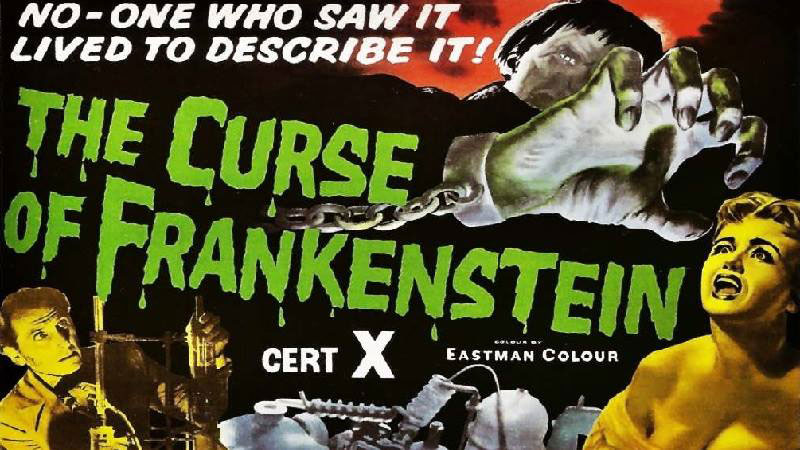
1.) Colour me intrigued…
The Curse of Frankenstein is not only Hammer’s first colour film, but it is also the first ever Frankenstein movie to be shot in colour.
2.) Dress for success…
Elizabeth’s clothes aren’t costumes. They are actually real Victorian clothes inherited from a Victorian wardrobe.
3.) Third time’s the charm…
Though appearing in previous movies together (Hamlet, 1948 and Moulin Rouge, 1952), Christopher Lee and Peter Cushing didn’t actually meet until they began filming The Curse of Frankenstein. They became dear friends during production and this friendship lasted their entire lives.
4.) It’s all relative…
The actor who plays young Elizabeth, Sally Walsh, is the real-life daughter of Hazel Court (adult Elizabeth). This decision was made because the casting director was trying to find a child that resembled Court, and the mother/daughter likeness was uncanny. However, unlike her mother, Sally Walsh hated being on set and hated being on camera.
https://www.youtube.com/watch?v=Np6uboP_g54
5.) The film is close to perfection, but not quite…
There are several noticeable mistakes in this film, which include:
- the breaks in the balcony railing are clearly visible before Victor ‘breaks’ it when he pushes the Professor over it
- during the close-up of Professor Bernstein’s corpse, you can see him breathing
- the puppy is moving before Dr. Frankenstein examines it, when it’s supposed to still be dead
6.) Apparently you CAN buy happiness. Or at least success and a life-long horror legacy…
Bernard Bresslow was considered for the same role that Lee achieved. As a taller actor, it was thought that he’d make a great ‘Creature’. However, Bresslow’s rate of pay was £10 per day, and Lee’s was £8, so Lee got the role. After this, Lee went on to play many of Hammer’s most beloved monsters, including Dracula.
7.) No pain, no brain…
The stunt double for Professor Bernstein was mildly injured during the scene in which Frankenstein pushes him over the balcony so that he can kill him and steal his brain. The stunt was rigged so that the stunt double would land on a padded area, which he did… except for his head, which hit the floor.
8.) The art of dismemberment…
The painting at the top of Frankenstein’s staircase is a replica of Rembrandt’s “The Anatomy Lesson of Dr. Nicholaes Tulp”. This was a deliberate choice to reflect Frankenstein’s behaviour (in particular, dismembering a hanged criminal).
9.) Ka-ching…
For many years, The Curse of Frankenstein was the most profitable film produced in Britain (it’s still included in the list of the most profitable films made in the U.K). It cost around £65,000 to produce but made more than 70 times this figure.
10.) ‘A rose by any other name…’
Christopher Lee played Frankenstein’s monster, but couldn’t be credited is such because Universal Pictures still held the copyright for the term ‘monster’ (but only in the context of Frankenstein’s Monster). Instead, Lee was credited as ‘The Creature’ in order to avoid a lawsuit.

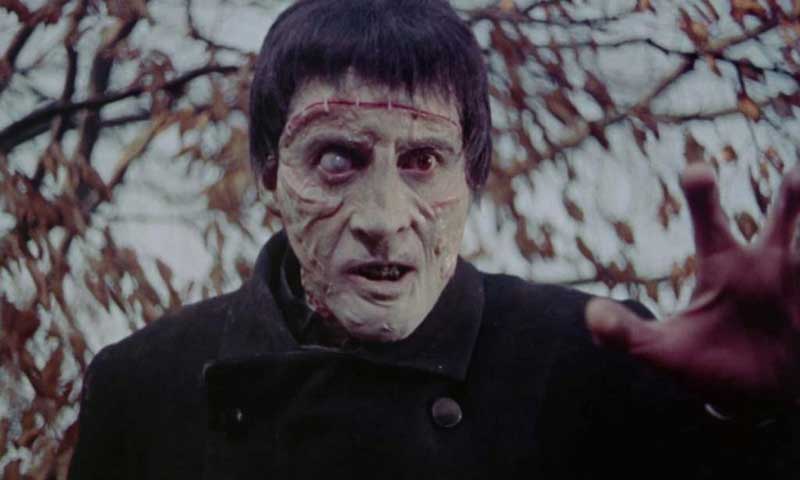
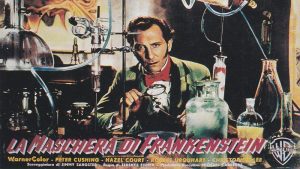
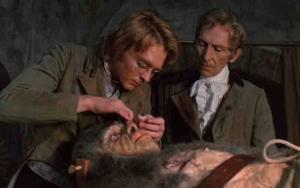
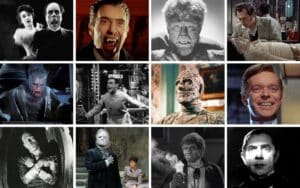
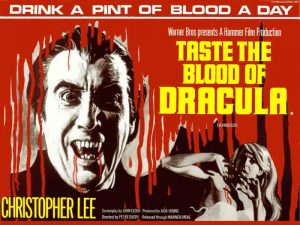

Welll…. actually… the only reason the “Creature” is called that is because Jimmy Sangster carried over the designation from the original Milton Subotsky script. That screenplay “Frankenstein & the Monster,” was similar to SON OF FRANKENSTEIN in that the central character was the son of the original scientist, infamous for making “the Monster.” In trying to prove his father’s theories right, Victor dubs his new, improved un-human “the Creature.” There are still remnants of the original ideas in the film (like the death of the father in the beginning. Originally it was more complex, and Sally Walsh, as Elizabeth, had to approach the old man in the coffin– a major reason why she decided she had no taste for making movies.). Even the original pressbook refers to the Cushing character as the son of the original scientist, though this idea was completely removed in editing. Nor was this “Hammer’s first color film.” They had made several 30 minute shorts and a couple of color features prior to CURSE. And though CURSE was indeed the first feature Frankenstein feature in color, the Monster appeared (and sang and danced) in “Two Hearts in Wax Time,” an MGM two-reeler made in 1935.
Was the little Dog in The Curse of Frankenstein really hurt?
Interesting read and some nice additional fact by Ted Newsom, though I would like to query his first two points if I may. Firstly did Jimmy Sangster simply carry over the designation of Frankenstein’s creature, the Creature, from the Milton Subotsky script. I have not come across confirmation he as to whether he actually saw it (and Terence Fisher always said he himself didn’t read it), but I do recall an interview with Sangster in which he recalled being specifically told to call it the Creature to create a layer away from the Universal films, so Kayleigh is not incorrect if that is the case. Secondly, was there a scene where the young Elizabeth approaches the old man in his coffin? Given the film opens with the funeral of Frankenstein’s mother, his father having died years before I don’t see how. Unless they originally planned to open with the funeral of his father but changed their minds during filming. Is that it?
Curious on what camera and post processes were utilized. The picture is still very sharp and colors vibrant even for today’s standards. If anyone knows I certainly would like the historical info for one.